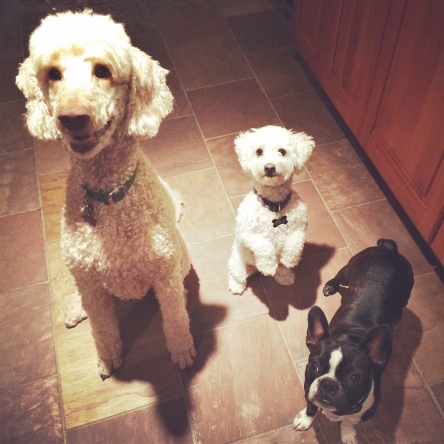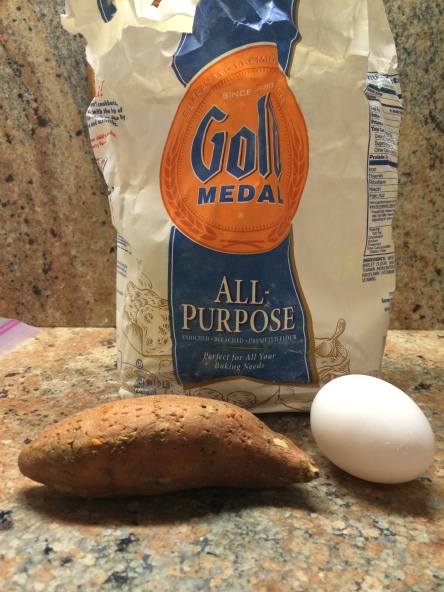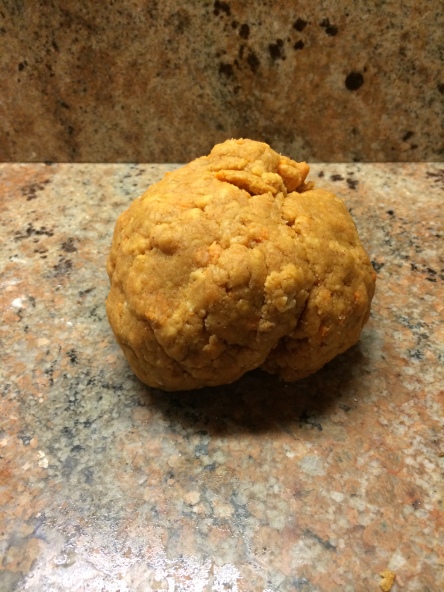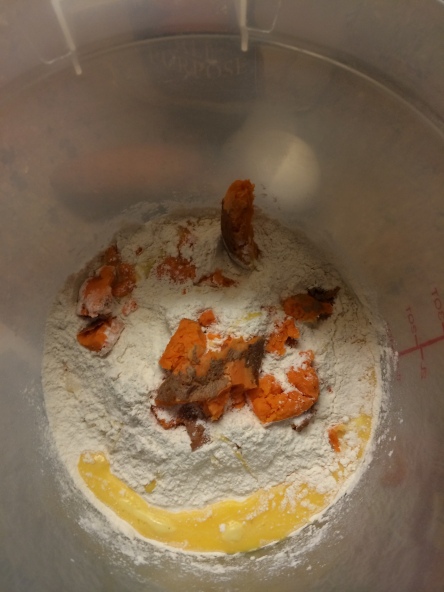Just like humans, dogs and cats have immune systems to protect them from foreign substances. But also like in humans, animals can have allergic reactions to these foreign substances. For example: your pet may react to certain pollens, dust, an ingredient in its food, household chemicals, grooming products, and insect bites. These reactions can have a range of different effects, including itchy, swollen skin, difficulty breathing, or a disruption of the digestive tract, such as: vomiting or diarrhea.
Pets that experience these types of allergic symptoms are often pretty miserable. Allergies are chronic and can cause life-long problems for pets and pet owners. The good news is that they can be managed with the proper diagnosis and monitoring.
The first step is to determine what it is that your pet is allergic to, so as to avoid your pets contact with that allergen. Pet allergies generally fall under one of four main categories:

Contact allergies occur when your pet’s skin comes in contact with a certain material or substance it’s allergic to. Animals with skin allergies most commonly will have reactions to many types of shampoos and flea collars. The skin at the point of contact will be irritated, it may itch, become swollen or discolored, give off a strong odor, and/or loss of hair due to constant biting/scratching. Contact allergies are generally not a hard problem to solve since they’re usually confined to a specific area of your pet’s body. You can experiment by removing different materials that your pet touches or discontinue the use of grooming products until you find the one that irritates its skin. Also, many groomers often offer hypoallergenic shampoos and gentle treatments for sensitive pets.
Food allergies and food intolerance are very separate issues and knowing which you are dealing with is the first step. A pet with an intolerance to a particular food type/brand will typically experience vomiting and/or diarrhea. Pets with a food allergy generally experience skin irritations, digestive disorders, respiratory issues, and/or infections of the ear canal. Most animals are not born with allergies to food; their immune systems develop an allergic response over time to some part of their diet. This problem can arise anytime in a pet’s life, but usually occurs between 2 and 6 years of age. Even pets that have been on the same diet for a long period of time can develop an allergy to that same food. Most often the pet is allergic to a specific ingredient in the food, which can be a challenge to solve. The most common food ingredients which pets are allergic to are: beef, chicken, fish, eggs, soy, wheat, corn, and/or milk.
Once you’ve determined your pet has an allergy, you can begin the process of elimination to isolate the specific ingredient causing the reaction. This can be a long process and requires strict monitoring of your pets diet, which means no treats, vitamins, leftovers/scraps, or even plants around the house. Allergic effects of food can stay in the pets system for 8 weeks or more, so you may have to keep your pet on a special diet for up to 12 weeks to see how he/she reacts, and you may have to do this several times with several different diets before you find the one that doesn’t cause an allergic reaction.
Inhalant allergies in pets are very similar to those we humans experience. Like us, animals can be allergic to the pollen and mold in the outside air (hay fever), and dust mites, mildew, and mold that can be found indoors. These types of allergens can cause severe itching of the ears, feet, groin, and armpits of the animal, but can also be spread across the entire body. Hairless, irritated “hot spots,” caused by excessive chewing and scratching of the affected skin can also occur. Most pets with allergies to airborne particles are usually allergic to more than one. You may also find that your pet’s allergies are seasonal, for example: he/she experiences itchiness only during high-pollen seasons, like humans with hay fever. In this case you can limit your pet’s outdoor activity time during theses seasons. There are many facilities that offer indoor play areas where your pet can stay cool in the summer and warm in the winter and at the same time avoid certain allergens. Now, if your pet is suffering from an indoor allergen, or an allergen that doesn’t vary by season, there’s very little you can do to isolate him/her from that specific allergen, though you may consider an air purifier to provide some relief in the home.
 Flea allergies are probably the most common problem for pets, and they aren’t actually allergic to fleas themselves, but to the proteins found in their saliva when they bite. Affected pets can itch severely from a single bite for over 5 days. If you suspect your pet has fleas try frequent baths and/or administering prescription flea applications/pills. Many professional groomers will offer flea and/or tick treatments to assist you in the removal process. We recommend consulting your veterinarian once you’ve chosen a flea repellent, so as not to cause anymore harmful reactions. You will also want to treat your pet’s environment, including bedding, upholstered furniture, and carpet. Eliminating fleas can be a tedious process and may require several treatments for your pet and home. When treating the home, we recommend having alternate accommodations for your pets so that they are not exposed to the harsh chemicals found in home treatments.
Flea allergies are probably the most common problem for pets, and they aren’t actually allergic to fleas themselves, but to the proteins found in their saliva when they bite. Affected pets can itch severely from a single bite for over 5 days. If you suspect your pet has fleas try frequent baths and/or administering prescription flea applications/pills. Many professional groomers will offer flea and/or tick treatments to assist you in the removal process. We recommend consulting your veterinarian once you’ve chosen a flea repellent, so as not to cause anymore harmful reactions. You will also want to treat your pet’s environment, including bedding, upholstered furniture, and carpet. Eliminating fleas can be a tedious process and may require several treatments for your pet and home. When treating the home, we recommend having alternate accommodations for your pets so that they are not exposed to the harsh chemicals found in home treatments.
In some cases, pet owners may become frustrated by not being able to determine exactly what is causing their pet’s allergic reaction. This is when you and your veterinarian should work together. Your veterinarian may be able to conduct blood work and/or intradermal (scratch) tests to better determine what it is that your pet is allergic to and then recommend possible treatments, or combination of treatments to alleviate your pet’s symptoms.
Treatment of your pet’s allergies will require a lot of patience and determination, but rest assured, with the time and effort, you can help your uncomfortable pet start to feel comfortable again!
 I like to think that I’m a pretty experienced baker but have never tried making treats for my dogs. I found a couple of good, healthy, and potentially grain free recipes to try out. So for this trial round I’m going to try a peanut butter sweet potato treat that makes roughly 2 dozen cookies.
I like to think that I’m a pretty experienced baker but have never tried making treats for my dogs. I found a couple of good, healthy, and potentially grain free recipes to try out. So for this trial round I’m going to try a peanut butter sweet potato treat that makes roughly 2 dozen cookies. 3 sweet potatoes (you can use canned if you don’t want to bake some potatoes)
3 sweet potatoes (you can use canned if you don’t want to bake some potatoes)














![crosby_golden_traveling[1] crosby_golden_traveling[1]](https://fitnfurry.files.wordpress.com/2009/11/crosby_golden_traveling1.jpg?w=150&h=121)
 people may be coming and going more than usual which increases the chances of having a lost pet. Also, there are many poisonous things for your pet to get into such as poinsettia plants, christmas tree water or turkey bones. When our schedules get hectic our animals sometimes suffer so why not drop them off for some
people may be coming and going more than usual which increases the chances of having a lost pet. Also, there are many poisonous things for your pet to get into such as poinsettia plants, christmas tree water or turkey bones. When our schedules get hectic our animals sometimes suffer so why not drop them off for some  Getting Excited!
Getting Excited!
 . We value your time and want to keep those of you who love to help animals updated on our progress as we get closer to this critical event for these two wonderful and giving organizations.
. We value your time and want to keep those of you who love to help animals updated on our progress as we get closer to this critical event for these two wonderful and giving organizations. Everyone has heard of K-9 Cough or Kennel Cough, and some of us have first hand experience with it. It is equivalent to a human catching a cough or common cold that is going around. If your dog comes down with K-9 Cough he will start coughing, but his general health will remain the same he won’t loose his appetite, have a temperature, or feel lethargic. His incessant coughing will be annoying to both you and him, but life threatening cases of this infection are extremely rare, and dogs will often recover on their own in 7-21 days without any type of treatment. It is a good idea to take your dog to the vet for treatment just to be safe, and the veterinarian will prescribe cough suppressants or antibiotics. K-9 Cough is transmitted by a virus expelled from an infected dog. This virus can be airborne, or anywhere that an infected dog has been; say in a common water dish at the dog park. Just like humans have a higher chance of catching a cold in an enclosed and heavily populated environment like an airplane, elevator, or an office, dogs have a higher chance of catching a K-9 Cough in an enclosed area that is not well ventilated. Many dogs can be carriers without exhibiting symptoms themselves and a dog may carry the virus for several days after they have fully recovered. Just like in humans some dogs are especially susceptible to the virus whereas others seems to have a higher level of immunity to it. A dog may catch K-9 Cough from a Champion show dog at a show, from the dog down the street, or from the Vet’s office. Because it is often refereed to as Kennel Cough people associate K-9 Cough with a kennel. Though dogs can catch K-9 Cough in a kennel, it is often not the source of the infection. No matter how well ventilated, spacious, and hygienic the kennel is, there is still a possibility a dog may develop K-9 Cough. In many cases the cough will simply run its course and the dog will recover. In some cases it will persist and a veterinarian will prescribe an antibiotic to assist the dogs immune system. The best method of prevention is to vaccinate the dog twice a year with the Bordetella Vaccine. This will HELP prevent K-9 cough. The Bordetella vaccine acts much like the Flu vaccine in humans. It will minimize the risk of infection but will not completely prevent it. Also, you should be aware that once your dog has received this vaccine he may carry the symptoms and either pass the illness or contract it himself simply by being vaccinated. Really the bottom line is that your dog could pick up this common doggy cold anywhere, and although it’s no fun it’s not a big deal.
Everyone has heard of K-9 Cough or Kennel Cough, and some of us have first hand experience with it. It is equivalent to a human catching a cough or common cold that is going around. If your dog comes down with K-9 Cough he will start coughing, but his general health will remain the same he won’t loose his appetite, have a temperature, or feel lethargic. His incessant coughing will be annoying to both you and him, but life threatening cases of this infection are extremely rare, and dogs will often recover on their own in 7-21 days without any type of treatment. It is a good idea to take your dog to the vet for treatment just to be safe, and the veterinarian will prescribe cough suppressants or antibiotics. K-9 Cough is transmitted by a virus expelled from an infected dog. This virus can be airborne, or anywhere that an infected dog has been; say in a common water dish at the dog park. Just like humans have a higher chance of catching a cold in an enclosed and heavily populated environment like an airplane, elevator, or an office, dogs have a higher chance of catching a K-9 Cough in an enclosed area that is not well ventilated. Many dogs can be carriers without exhibiting symptoms themselves and a dog may carry the virus for several days after they have fully recovered. Just like in humans some dogs are especially susceptible to the virus whereas others seems to have a higher level of immunity to it. A dog may catch K-9 Cough from a Champion show dog at a show, from the dog down the street, or from the Vet’s office. Because it is often refereed to as Kennel Cough people associate K-9 Cough with a kennel. Though dogs can catch K-9 Cough in a kennel, it is often not the source of the infection. No matter how well ventilated, spacious, and hygienic the kennel is, there is still a possibility a dog may develop K-9 Cough. In many cases the cough will simply run its course and the dog will recover. In some cases it will persist and a veterinarian will prescribe an antibiotic to assist the dogs immune system. The best method of prevention is to vaccinate the dog twice a year with the Bordetella Vaccine. This will HELP prevent K-9 cough. The Bordetella vaccine acts much like the Flu vaccine in humans. It will minimize the risk of infection but will not completely prevent it. Also, you should be aware that once your dog has received this vaccine he may carry the symptoms and either pass the illness or contract it himself simply by being vaccinated. Really the bottom line is that your dog could pick up this common doggy cold anywhere, and although it’s no fun it’s not a big deal.